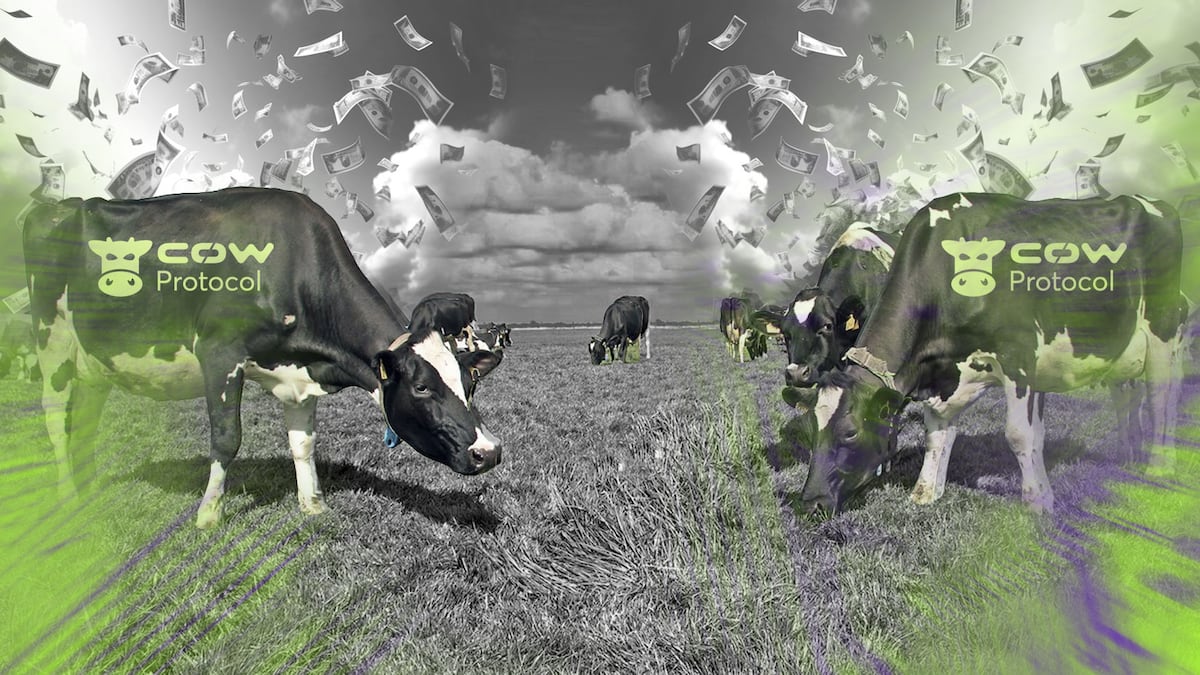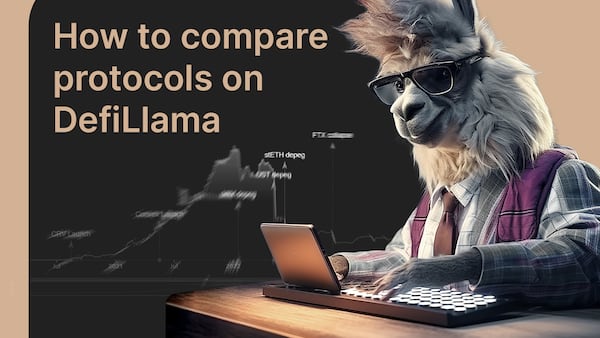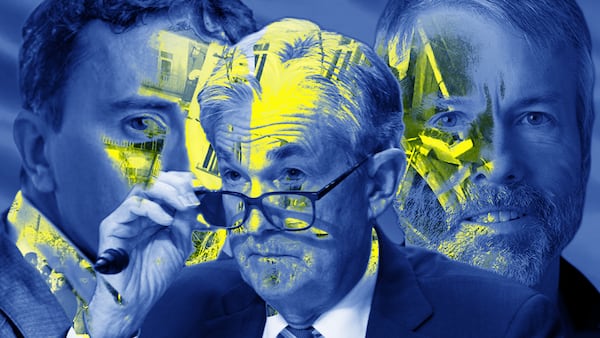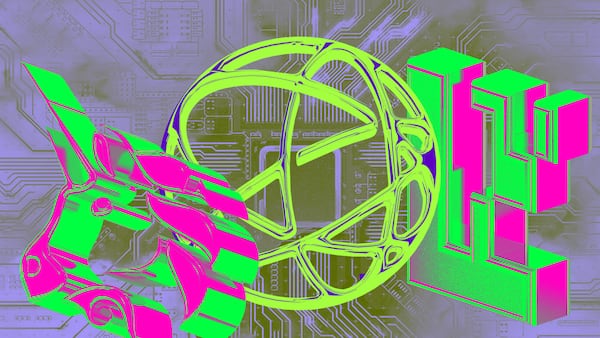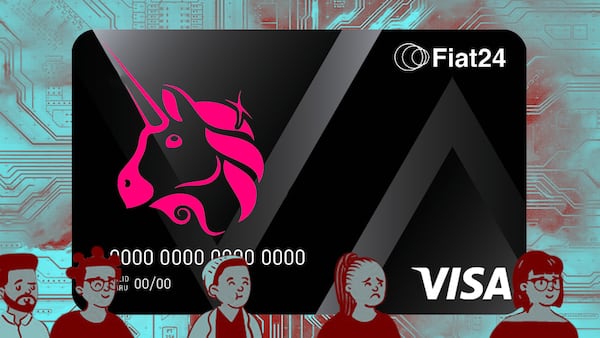- Cow Swap has started testing ways to generate revenue.
- The first model to be tested will take 50% of surplus trade value generated by the protocol.
- CoW Swap has saved its users over $188 million since it launched in 2021.
DeFi protocols typically don’t generate revenue, raising concerns about the long-term sustainability of the industry.
One common solution to address this challenge is the implementation of a so-called fee switch, which allows these protocols to start charging a small fee on each transaction on their protocol.
CoW Swap, a decentralised exchange on Ethereum, has become the latest DeFi protocol to start generating revenue after its DAO last week voted overwhelmingly in favour of a plan to start testing various fee models.
In a Tuesday tweet, the official CoW Swap X account announced the protocol would start taking 50% of the surplus generated on trades. The surplus is the positive difference between the price quote CoW Swap provides users before they submit a trade and the price the protocol executes it at.
Per CIP-34, CoW Protocol is now charging fees on out-of-market limit orders.
— CoW DAO (@CoWSwap) January 23, 2024
Specifically, if CoW Protocol can find a way to give you more than you asked for ~ beyond the limit price you set ~ it now splits that extra amount 50/50 with you. https://t.co/0neNDKODCI
Now the fee switch is activated, the protocol can start profiting from the more than $33 billion in trading volume it has facilitated since its launch in 2021.
Launched on Ethereum, CoW Swap facilitates peer-to-peer token swaps — “coincidence of wants” as the protocol’s name stands for.
The CoW model bypasses the need for DeFi’s common liquidity pool model, a feature that sets it apart from many other exchanges such as Uniswap where the transactions aren’t peer-to-peer but peer-to-pool.
CoW Swap’s fee models
The first model being tested is called the quote improvement fee.
“Quote improvement fees are a good way to align our incentives with our users — because the more we save them, the more money we make,” CoW DAO core contributor Alex Marsh told DL News.
Marsh explained that such quote improvement fees are taken only from the value CoW Protocol creates, and don’t cut into the incentives given to the protocol’s solvers — the algorithms that match orders — or the trades placed by its users.
In addition to the quote improvement fee, CoW Swap plans to test several other models, including a volume-based fee and a fixed percent fee.
All these options have different benefits and costs, and the DAO will decide which option to choose after testing all of them.
Since launch, CoW Swap has generated over $188 million in surplus trade value — the positive difference between the price a trader is quoted and what they ultimately receive. That’s a lot of money saved for everyday users in DeFi.
Marsh said CoW Swap started by testing quote improvement fees on out-of-market limit orders because “no other exchange is able to improve prices on these types of orders — including 1inch Fusion and UniswapX.”
With monthly trading volumes regularly exceeding $1 billion, CoW Swap is frequently among the top 10 decentralised exchanges by trading volume.
Protocols as businesses
As the DeFi sector matures, protocols that have established themselves in the market are increasingly looking to start monetising their success.
The impetus to do so often comes from a DeFi protocol’s venture backers, who want their investment to start generating a return.
Cherry Crypto, a VC firm with investments in CoW Swap, supports the decision to experiment with a fee model. “It’s an important lever for the team to be pulling on,” Brett Sun, an investor at Cherry Crypto told DL News.
Sun participates in CoW Swap governance on behalf of Cherry Crypto. He controls 4 million of CoW Swap’s COW governance token and voted in favour of the fee switch proposal.
“Protocols will be more and more fundamentally evaluated as businesses where positive cash flows are important,” Sun said.
By turning on the fee switch, CoW Swap will start generating a predictable stream of revenue that investors can factor in when valuing the protocol.
Sun also noted CoW Swap’s advantage in that it can provide a “win-win” fee model by only taking a fee on positive slippage trades — when the protocol can execute trades at a better price than originally quoted.
Uniswap’s frontend fees
While CoW Swap’s community supports activating the protocol’s fee switch, the decision to turn on fees at other DeFi protocols is often not so unanimous.
Uniswap, the biggest decentralised exchange with more than $4 billion in total value locked, is divided on the issue, .with significant differences between large token holders and DAO delegates.
At the heart of the debate is the impact a fee switch would have on the protocol. In order to turn on its fee switch, Uniswap must either cut into the fees paid to liquidity providers, or levy an additional fee on its users.
In October, Uniswap arrived at a compromise by charging a 0.15% fee only to users who interact with the protocol through the official Uniswap website and wallet app. The fee has brought in over $2.7 million for the protocol since it was implemented.
Unlike Uniswap, CoW Swap’s fees are being implemented at the protocol level, meaning that users won’t be able to dodge them by using a third-party interface.
Until testing concludes, it’s unclear how much CoW Swap’s new fees could potentially bring in.
The governance token of CoW Swap, COW, is currently trading at around $0.27. Despite the positive news for the protocol, it’s down by 10% over the past week amid a broader market downturn.
Tim Craig is DL News’ Edinburgh-based DeFi Correspondent. Reach out with tips at tim@dlnews.com.
